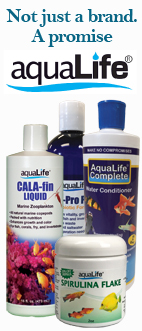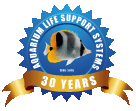|
|
News & Reviews Article
| Title |
Lighting for Plants and Corals |
| Author |
Seth Luedtke
|
| Last Updated |
2014-11-25
|
| Abstract |
|
|
|
What is Light? The most important thing to remember is that the light that our eyes perceive is not necessarily the light that photosynthetic organisms require to live.
Photosynthesis occurs between the light wavelengths of 400nm and 700nm. Wavelengths below 400nm have excessive energy and can damage tissues. On the other end, wavelengths above 700nm carry to little energy and do not effectively simulate the chloroplasts in the organisms.
The easiest way to measure light energy that can be effectively used by our captive animals is PAR. PAR is the measure of Photosynthetically Active Radiation measured in micromole photons per square meter per second (�mol/m/sec). This measures the energy produced by light wavelengths between 400nm and 700nm which contact one square meter in one second.
Lumens are a measure of light output. One Lumen is equal to the amount of light produced by one candle one foot from the source, over one square foot. Lumens measures the amount of light visible to the human eye produced by a light source.
Kelvin temperature is used in the hobby virtually interchangeably with spectrum. The industry uses this measurement to describe the visible light wavelength which is produced by a bulb. In general bulbs with lower Kelvin rating will produce higher PAR values then thoughts with higher Kelvin ratings. This means that 6700k bulbs will produce more useful light for our photosynthetic organisms than 15000k bulbs. However this may result in coloration of our animals which is less appealing to us, for example brown coral.
There are currently four high output options for the aquarist Metal Halide, Power compact, T5ho, and Led. Every option can be used effectively if there is enough output to create the PAR values the chloroplasts need to convert sugars. This produces a lot of debate as to what is the best lighting source for our animals is. This leaves us to find the most energy efficient and cost effective light source that will produce the light needed for the organisms which we desire to keep.
|
|
|
|






